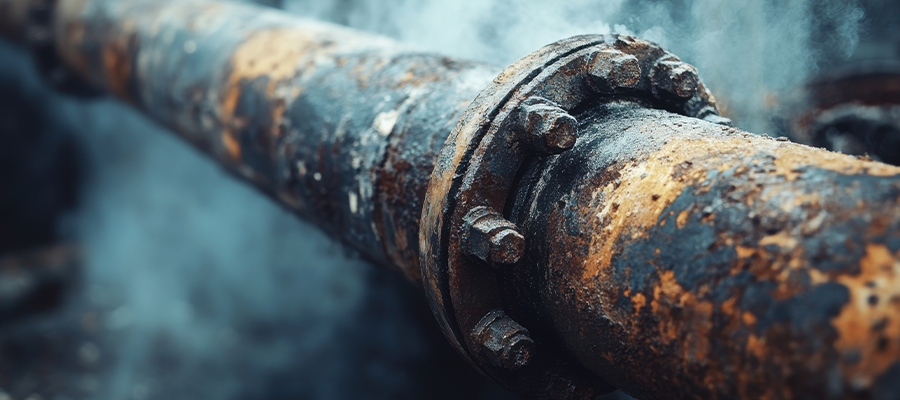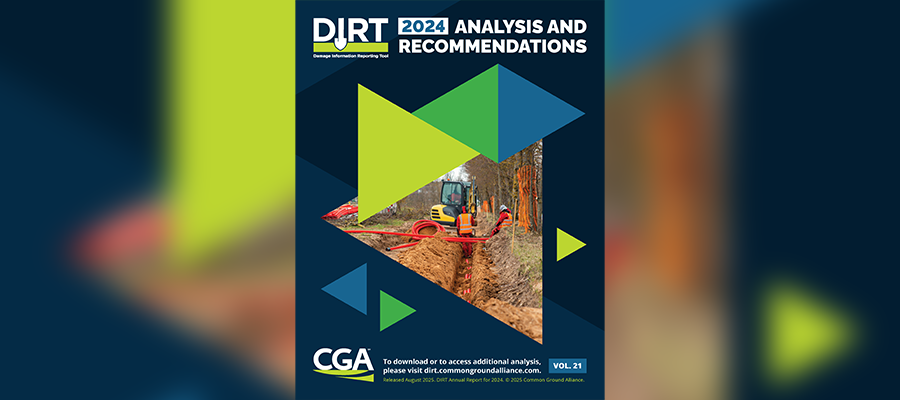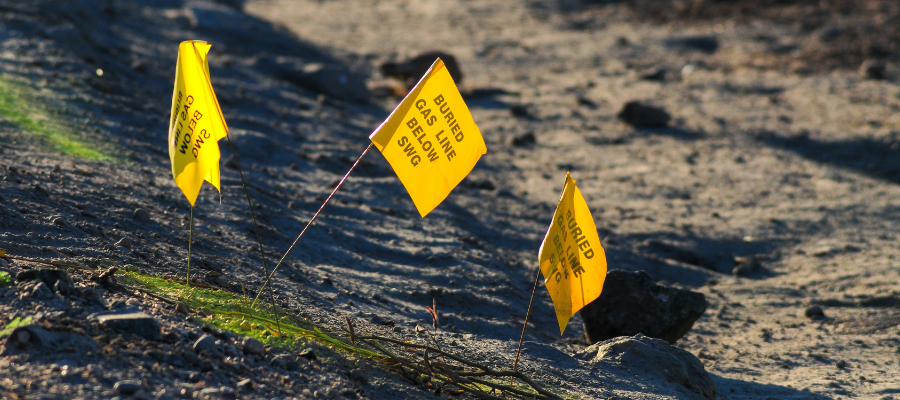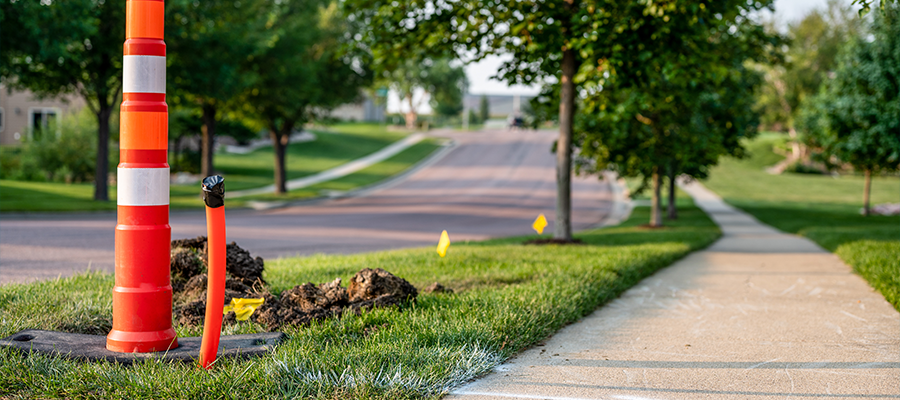Leak Detection: The Utility Industry’s Frontline in Sustainability

Leak Detection: The Utility Industry’s Frontline in Sustainability
By Mark Green, Business Development Manager, Bermex
Environmental responsibility and resource conservation are more than good PR; they have become critical, bottom-line imperatives. Utility companies find themselves at the forefront of a sustainability battle that extends far beyond their traditional operational boundaries. At the heart of this challenge lies a deceptively simple yet profound issue: leak detection.
What may seem like routine maintenance work has evolved into one of the most crucial sustainability initiatives in the utility sector, with implications that ripple through environmental, economic, and regulatory landscapes.
The Staggering Scale of Water Loss
The numbers paint a sobering picture of the challenge facing America’s water infrastructure. According to the ASCE (American Society of Civil Engineers), an estimated 6 billion gallons of treated water are lost each day across the United States due to leaks in distribution systems. To put this figure into perspective, this daily loss could supply water to more than 50 million people — roughly equivalent to the combined populations of California’s largest metropolitan areas.
This massive water loss represents more than just a statistical concern; it embodies a fundamental threat to sustainability efforts nationwide. Every gallon of water that escapes through undetected leaks carries with it the embedded energy, chemicals, and resources invested in its treatment and distribution. The environmental cost extends beyond immediate loss, encompassing the entire lifecycle of water processing, from initial extraction to final delivery.
The Hidden Costs of Neglect
The financial and environmental implications of undetected leaks create a complex web of consequences that utilities can no longer afford to ignore. From a regulatory standpoint, persistent water losses can lead to non-compliance with environmental standards and conservation mandates, resulting in substantial penalties and increased scrutiny from oversight bodies. These regulatory challenges are compounded by the growing emphasis on water conservation in drought-prone regions and communities facing supply constraints.
Beyond water systems, gas utilities face equally pressing concerns with methane and greenhouse gas emissions from undetected leaks. Methane, a potent greenhouse gas with a warming potential significantly higher than carbon dioxide, represents both an environmental liability and a lost commodity. The dual impact of environmental harm and revenue loss makes leak detection not just an operational necessity but a sustainability imperative.
The financial burden extends to infrastructure degradation, emergency repairs, and the cascading effects of system failures. Undetected leaks often lead to more severe problems, including sinkholes, foundation damage, and service interruptions that can cost utilities exponentially more than proactive detection and repair programs.
An Integrated Approach to Leak Detection
Modern leak detection has evolved far beyond the traditional methods of visual inspection and customer reports. Today’s leading solutions integrate sophisticated technology with practical field applications to create comprehensive detection and management systems. Geographic Information Systems (GIS) integration has revolutionized how utilities approach leak detection, enabling precise mapping, historical tracking, and predictive analysis that transforms reactive maintenance into proactive asset management.
Mobile leak detection services represent a paradigm shift in field operations, combining advanced sensor technology with real-time data collection and analysis. These systems allow technicians to cover vast areas efficiently while maintaining high accuracy levels in leak identification and location.
District metering is one of the most utilized technologies that makes this possible. District metering enables technicians to divide a water distribution system into smaller, manageable sections. By measuring the volume of water entering a given section and then subtracting the cumulative consumption recorded by the individual meters within that section, technicians can determine whether water loss is occurring.
This method provides a targeted approach to system analysis, allowing areas of concern to be identified efficiently. As a result, acoustic leak detection efforts can be concentrated on specific zones rather than applied indiscriminately across the entire system.
The integration of mobile technology with GIS platforms creates a seamless workflow from detection through repair, ensuring that no identified leak falls through administrative cracks.
Companies like Bermex have pioneered this integrated approach, offering comprehensive leak detection services that combine cutting-edge technology with practical field expertise. Their GIS-integrated mobile solutions provide utilities with the tools necessary to systematically address leak detection challenges while building robust databases for long-term asset management and regulatory compliance.
Digital Accountability and Audit Readiness
The shift toward digital reporting systems has transformed leak detection from a maintenance activity into a strategic sustainability tool. Digital documentation provides the detailed records necessary for regulatory compliance, environmental reporting, and performance measurement. This comprehensive data collection enables utilities to demonstrate their commitment to sustainability through measurable results and continuous improvement.
Digital reporting systems enhance accountability by creating transparent, auditable records of detection activities, response times, and repair outcomes. Advanced work order management software captures comprehensive data including technician credentials, precise location geotagging, photographic evidence, and complete project documentation. This transparency proves invaluable during regulatory audits, environmental assessments, and sustainability reporting initiatives, providing utilities with the detailed, verifiable records necessary to demonstrate compliance with regulations and industry standards.
Furthermore, digital systems enable predictive analytics that help utilities identify patterns, optimize detection schedules, and allocate resources more effectively. This data-driven approach to leak detection supports both immediate operational improvements and long-term sustainability planning.
The Proactive Path Forward
As utilities continue to face increasing pressure to demonstrate environmental stewardship while maintaining reliable service, leak detection emerges as a cornerstone of sustainable operations. The combination of advanced technology, comprehensive reporting, and proactive management practices positions leak detection as not just a maintenance necessity but a fundamental component of corporate responsibility and environmental leadership.
The path toward sustainable utility operations runs directly through effective leak detection programs that combine technological innovation with operational excellence, creating measurable benefits for utilities, communities, and the environment.
Schedule a leak detection audit with Bermex to protect your utility, your customers, and the environment.
Related Articles

By Tommy Combs, President, Bermex In the latest edition of the DIRT Report, the Common Ground Alliance (CGA) reveals that despite decades of progress in underground infrastructure damage prevention, the industry remains at a critical turning point. The 2024 data show a concerning plateau, and in some cases a reversal, in the trend of reducing[...]
Read More
Every year on Veterans Day, we pause to honor the men and women who have worn our nation’s uniform. They come from every background and every corner of the country, united by a common purpose: to serve something greater than themselves. Their service enriches our organization, and we are grateful for the impact they continue[...]
Read More
By Thomas Gooch, Director of Operations, Bermex Every few minutes across the United States, someone digging into the ground accidentally strikes an underground utility line. The consequences of these incidents extend far beyond the immediate damage to pipes, cables, or equipment. Utility strikes represent an extremely expensive and dangerous infrastructure challenge. The Financial Impact According[...]
Read More
By David Mack, Senior Business Development Manager, Bermex When it comes to preventing utility damages, most organizations focus on technology, training, and regulations. But at the 2025 CGA Conference & Expo, a powerful theme emerged from multiple speakers, including Dr. Victoria Grady of George Mason University: culture, not compliance, is the foundation of lasting safety[...]
Read MoreCategories
Recent Posts
- Diffusing a Difficult Customer [Infographic] 10th Sep 2018
- Neighborhood Safety [Infographic] 24th Sep 2018
- Bermex Has Named Keith Pancake as New Safety Manager 02th Dec 2019